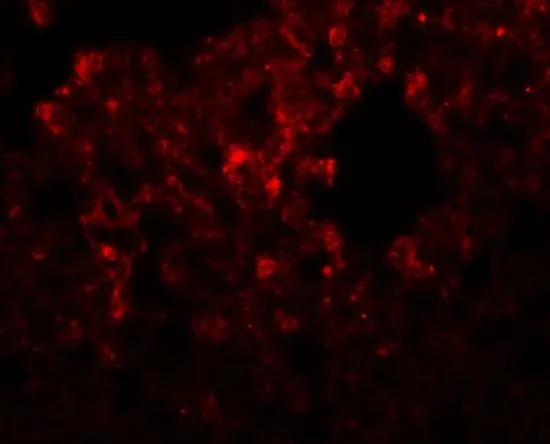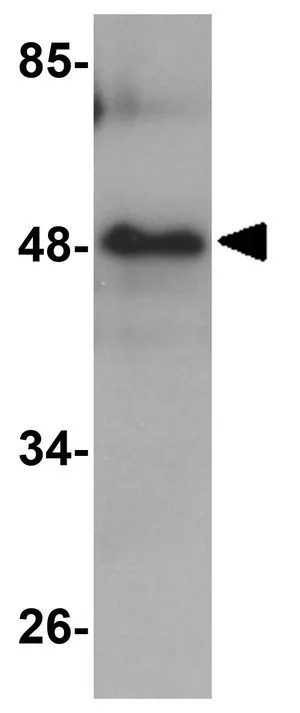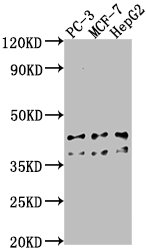
IHC-P analysis of rat lung tissue using GTX85218 RHBDD3 antibody. Working concentration : 20 microg/ml
RHBDD3 antibody
GTX85218
ApplicationsWestern Blot, ELISA, ImmunoHistoChemistry, ImmunoHistoChemistry Paraffin
Product group Antibodies
TargetRHBDD3
Overview
- SupplierGeneTex
- Product NameRHBDD3 antibody
- Delivery Days Customer9
- Application Supplier NoteWB: 1 microg/mL. IHC-P: 20 microg/mL. *Optimal dilutions/concentrations should be determined by the researcher.Not tested in other applications.
- ApplicationsWestern Blot, ELISA, ImmunoHistoChemistry, ImmunoHistoChemistry Paraffin
- CertificationResearch Use Only
- ClonalityPolyclonal
- Concentration1 mg/ml
- ConjugateUnconjugated
- Gene ID25807
- Target nameRHBDD3
- Target descriptionrhomboid domain containing 3
- Target synonymsC22orf3, HS984G1A, PTAG, rhomboid domain-containing protein 3, hypothetical protein HS984G1A, pituitary tumor apoptosis
- HostRabbit
- IsotypeIgG
- Protein IDQ9Y3P4
- Protein NameRhomboid domain-containing protein 3
- Scientific DescriptionThe Rhomboid family of proteins is made up of several widely conserved polytopic membrane serine proteases that play roles in growth and development. RHBDD3 was initially identified as a novel pituitary tumor apoptosis gene (PTAG) whose expression was reduced in certain pituitary adenomas. Overexpression of RHBDD3 in AtT20 cells showed an increase in apoptotic activity and caspase activation in response to bromocriptine, and apoptosis-inducing dopamine D2 analog, suggesting that reactivation of RHBDD3 in tumors may be a therapeutically useful tool. Later experiments also showed that RHBDD3 expression is also reduced in several primary colorectal tumors, indicating that loss of RHBDD3 contributes to a blunted apoptotic response and probably predisposes cells towards malignant transformation.
- Storage Instruction-20°C or -80°C,2°C to 8°C
- UNSPSC12352203









